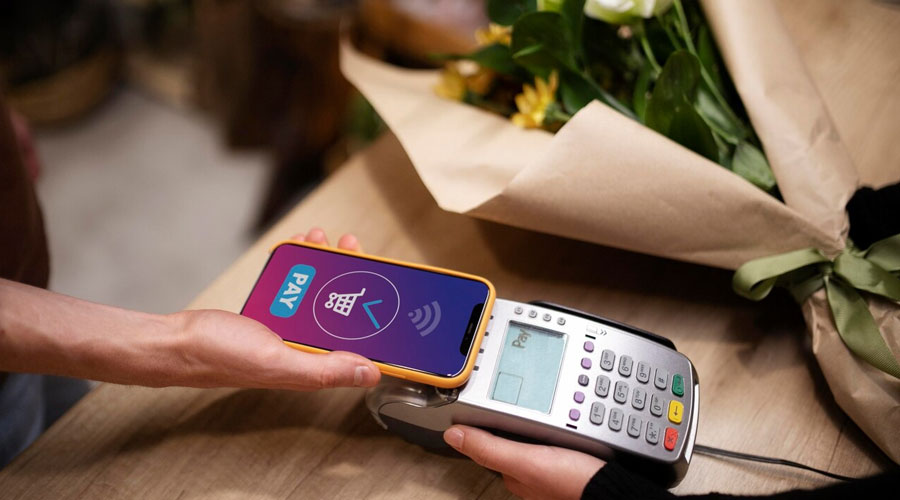Table of Contents
Introduction to Finance App Development
In the ever-evolving landscape of financial management, Finance App Development stands out as a pivotal force driving innovation and reshaping the way individuals and businesses interact with their finances. As technology continues to advance at an unprecedented pace, the development of finance apps has become a cornerstone in providing users with enhanced accessibility, security, and personalized financial insights.
Understanding Finance App Development
Finance App Development encompasses the creation and optimization of applications designed to facilitate various aspects of financial management. These applications can range from mobile banking apps offered by traditional financial institutions to standalone personal finance management apps. The primary objective is to leverage technology to streamline financial processes, enhance user experience, and provide individuals with powerful tools to take control of their financial well-being.
- Evolution of Finance Apps: The journey of finance apps can be traced back to the early days of online banking. Initially, these apps offered basic functionalities such as checking account balances and transferring funds. However, with the proliferation of smartphones and the increasing demand for more sophisticated financial tools, the scope of finance app development has expanded exponentially.Today, finance apps cover a broad spectrum of services, including budgeting, investment tracking, bill payments, expense categorization, and even cryptocurrency management. The evolution of these applications reflects the dynamic nature of the financial technology (FinTech) sector and its continuous efforts to meet the diverse needs of users.
- Key Components of Finance App Development: Finance App Development involves a multifaceted approach, incorporating various key components to ensure the creation of robust and feature-rich applications. These components include:
- User Interface (UI) Design: An intuitive and user-friendly interface is critical for the success of finance apps. UI design focuses on creating layouts and visual elements that make navigation seamless and enjoyable for users. Clear and concise design elements contribute to a positive user experience.
- Security Measures: Given the sensitive nature of financial data, security is a top priority in finance app development. Developers implement encryption protocols, multi-factor authentication, and other advanced security features to protect users’ information from unauthorized access and cyber threats.
- Integration of APIs: Finance apps often rely on integration with external services and APIs (Application Programming Interfaces) to access real-time data from financial institutions, stock markets, and other relevant sources. This integration ensures that users receive up-to-date and accurate information.
- Data Analytics and Machine Learning: Advanced analytics and machine learning algorithms play a crucial role in providing personalized financial insights. These technologies analyze user behavior, spending patterns, and market trends to offer tailored recommendations and predictions, contributing to a more proactive and informed financial management experience.
- Cross-platform Compatibility: With users accessing finance apps from various devices, including smartphones, tablets, and desktops, ensuring cross-platform compatibility is essential. Finance app developers strive to create applications that deliver a consistent and seamless experience across different devices and operating systems.
- The Impact of Mobile Technology: Mobile technology has been a driving force behind the widespread adoption of finance apps. The ubiquity of smartphones has enabled users to carry their financial tools with them wherever they go, fostering a culture of real-time financial management. The convenience offered by mobile finance apps has significantly contributed to their popularity and increased usage.Additionally, the integration of mobile features such as push notifications, biometric authentication (fingerprint or facial recognition), and mobile wallets has further enhanced the overall user experience. These features not only simplify transactions but also contribute to the security and accessibility of finance apps.
- Challenges and Solutions in Finance App Development: Despite the numerous advantages of finance apps, developers face challenges in creating and maintaining these applications. Some common challenges include:
- Security Concerns: The handling of sensitive financial data necessitates robust security measures. Developers must stay vigilant against evolving cybersecurity threats and continually update security protocols to safeguard users’ information.
- Regulatory Compliance: Finance apps must comply with a myriad of regulations, including data protection laws and financial industry standards. Staying abreast of these regulations and ensuring compliance is a constant challenge for developers and financial institutions.
- User Trust and Education: Building and maintaining user trust is crucial for the success of finance apps. Educating users about the security measures in place, the benefits of using the app, and how to maximize its features is essential for fostering a positive user experience.
- Integration Complexity: Integrating with various financial institutions, payment gateways, and external services can be complex. Finance app developers must navigate integration challenges to ensure seamless connectivity and data accuracy.
Key Features of Successful Finance Apps
In the fast-paced realm of financial management, the evolution of Finance App Development is reshaping how individuals and businesses handle their finances. This article explores the pivotal role of Finance App Development in providing streamlined financial solutions, and subsequently delves into the key features that contribute to the success of these applications. As we navigate through the intricacies of financial technology, understanding the essential features that make finance apps successful becomes paramount.
The Need for Finance App Development:
The surge in Finance App Development is a response to the changing dynamics of consumer behavior and technological advancements. Smartphones have become ubiquitous, and users seek convenient, on-the-go solutions for managing their finances. Finance apps bridge this gap by offering a range of features tailored to enhance the user experience and promote financial well-being.
- Enhanced User Experience: Successful finance apps prioritize an intuitive and user-friendly interface. Navigating financial data should be seamless, and features such as personalized dashboards, easy-to-understand graphics, and a straightforward layout contribute to an enhanced user experience. The goal is to empower users with financial insights without overwhelming them with complexity.
- Real-time Financial Insights: The cornerstone of any successful finance app is the ability to provide real-time financial insights. Users demand instant access to their financial data, including transaction history, account balances, and investment performance. By offering timely information, these apps empower users to make informed decisions about their finances promptly.
- Security and Trust: Security is a non-negotiable aspect of finance app development. Successful applications implement robust security measures, including end-to-end encryption, secure login methods, and multi-factor authentication. Building trust among users is crucial, and a secure platform is essential for encouraging users to entrust their sensitive financial information to the app.
- Automation of Financial Processes: Automation is a key feature that streamlines financial management. Successful finance apps automate routine tasks such as bill payments, expense tracking, and savings contributions. This not only saves users time but also reduces the likelihood of errors associated with manual data entry. Automation contributes to the efficiency and accuracy of financial processes.
- Financial Goal Tracking: Empowering users to set and track financial goals is a feature that distinguishes successful finance apps. Whether it’s saving for a vacation, a home, or retirement, these apps allow users to establish goals, track progress, and receive notifications when milestones are reached. Goal tracking fosters financial discipline and motivates users to stay on course.
- Personalized Financial Guidance: Tailoring financial advice to individual user needs is a hallmark of successful finance apps. By leveraging machine learning algorithms, these applications analyze user behavior, spending patterns, and financial goals to provide personalized recommendations. This feature enhances the app’s value proposition by offering relevant and actionable insights.
The Future of Finance App Development:
Looking ahead, the future of Finance App Development holds exciting possibilities. As technology continues to advance, emerging trends such as artificial intelligence, machine learning, and blockchain are set to further revolutionize the financial technology landscape. The integration of these technologies into finance apps will likely result in even more sophisticated features and a higher level of personalization.
- Artificial Intelligence for Predictive Analytics: AI-driven predictive analytics will become more prevalent in finance apps, providing users with forecasts of their financial future based on historical data. This feature can assist users in making proactive decisions to optimize their financial outcomes.
- Blockchain for Enhanced Security: The use of blockchain technology can further enhance the security of finance apps. Blockchain’s decentralized and tamper-resistant nature can be leveraged to secure transactions and user data, providing an additional layer of trust for users.
- Voice-Activated Financial Assistants: The integration of voice-activated assistants powered by AI will enable users to interact with finance apps using natural language. This hands-free approach enhances accessibility and convenience, allowing users to manage their finances through verbal commands.
- Cryptocurrency Integration: With the rise of cryptocurrencies, finance apps may incorporate features for managing and tracking digital assets. Integrating cryptocurrency wallets, real-time market data, and investment opportunities in digital assets can cater to users with diversified portfolios.
Mobile Payment Integration in Finance Apps
In the dynamic realm of Finance App Development, the integration of mobile payment capabilities has emerged as a transformative force, reshaping the way individuals and businesses engage with their finances. This article delves into the intricacies of mobile payment integration within finance apps, exploring its evolution, impact on user experience, security considerations, and the future trends that promise to redefine the landscape.
Evolution of Mobile Payment Integration:
The integration of mobile payments into finance apps represents a significant evolution in the financial technology sector. As smartphones became ubiquitous, the demand for seamless, secure, and efficient payment solutions grew exponentially. Finance app developers recognized the need to incorporate these capabilities, leading to the convergence of financial management and mobile payment functionalities.
- Convenience and Accessibility: Mobile payment integration enhances the convenience and accessibility of finance apps. Users can now seamlessly execute transactions, pay bills, and transfer funds directly from their mobile devices, eliminating the need for traditional banking channels. This convenience aligns with the on-the-go lifestyle of modern consumers, fostering a more efficient and user-friendly financial experience.
- Diversity of Payment Options: With mobile payment integration, finance apps expand the range of payment options available to users. From credit and debit cards to digital wallets and contactless payments, these apps accommodate various preferences, ensuring a versatile and inclusive financial ecosystem.
- Streamlined Transactions: The integration of mobile payments streamlines financial transactions within the app. Users can make purchases, split bills, and transfer funds seamlessly without switching between different platforms. This consolidation contributes to a more cohesive and integrated financial management experience.
Impact on User Experience:
Mobile payment integration goes beyond transactional efficiency; it significantly influences the overall user experience within finance apps.
- Single-Platform Convenience: Integrating mobile payments into finance apps creates a one-stop-shop for users. They can manage their finances, monitor transactions, and make payments without navigating between multiple applications. This streamlined experience enhances user satisfaction and encourages greater engagement with the app.
- Personalization and Insights: Mobile payment data provides valuable insights into user spending patterns. Finance apps leverage this data to offer personalized recommendations, budgeting insights, and tailored financial advice. The integration fosters a deeper understanding of users’ financial behaviors, enabling apps to deliver more relevant and valuable content.
- Enhanced Security Measures: Security is paramount in financial transactions. Mobile payment integration necessitates robust security measures, including encryption, two-factor authentication, and biometric verification. These features instill confidence in users, assuring them that their financial data is protected, thereby enhancing the overall trustworthiness of the finance app.
Security Considerations in Mobile Payment Integration:
While the integration of mobile payments brings numerous advantages, it also introduces unique security considerations that developers must address to ensure the integrity of financial transactions.
- Data Encryption: Implementing end-to-end encryption is crucial to safeguard sensitive financial information during transactions. This encryption ensures that data is securely transmitted and cannot be intercepted by malicious entities.
- Biometric Authentication: Leveraging biometric authentication, such as fingerprint or facial recognition, adds an extra layer of security to mobile payments. This feature enhances user authentication, mitigating the risk of unauthorized access to financial accounts.
Future Trends in Mobile Payment Integration:
As technology continues to advance, the future of mobile payment integration in finance apps holds exciting possibilities.
- Blockchain Technology: The adoption of blockchain technology in mobile payments can enhance transparency, reduce transaction costs, and provide a more secure and decentralized infrastructure. Finance apps exploring blockchain integration aim to offer users a tamper-proof and efficient payment system.
- Central Bank Digital Currencies (CBDCs): The development and integration of Central Bank Digital Currencies by various countries could reshape the landscape of mobile payments. Finance apps may evolve to support CBDC transactions, offering users a direct link to government-backed digital currencies.
- Augmented Reality (AR) and Virtual Reality (VR): The integration of AR and VR technologies could revolutionize the way users interact with mobile payments. Visualizing financial transactions in immersive environments may become a reality, providing a novel and engaging user experience.
Personal Finance Management Apps: Tools and Trends
In the digital age, where technology permeates every aspect of our lives, personal finance management has witnessed a paradigm shift. The advent of Personal Finance Management (PFM) apps has revolutionized the way individuals handle their money, providing tools and insights to empower users towards financial well-being. This comprehensive guide explores the various tools and trends in PFM apps, shedding light on their role in reshaping financial habits and fostering a more secure financial future.
I. Understanding Personal Finance Management Apps:
A. Definition and Purpose: Personal Finance Management apps are digital tools designed to assist individuals in managing their money efficiently. These apps offer a range of features, including expense tracking, budgeting, investment management, and financial goal setting. Their primary purpose is to provide users with a holistic view of their financial health and help them make informed decisions.
II. Popular Personal Finance Management Apps:
A. 1. Mint: Mint is a widely used PFM app that consolidates financial information from various accounts, providing a comprehensive overview of a user’s financial status. It offers budgeting tools, expense tracking, and credit score monitoring.
B. 2. YNAB (You Need a Budget): YNAB focuses on zero-based budgeting, encouraging users to assign every dollar a specific job. It provides tools to track spending, save for goals, and break the paycheck-to-paycheck cycle.
C. 3. Personal Capital: Personal Capital caters to both budgeting and investment management. It provides a holistic view of a user’s net worth, tracks expenses, and offers investment planning tools.
III. Trends in Personal Finance Management Apps:
A. 1. Integration of Artificial Intelligence (AI): The incorporation of AI in PFM apps is a growing trend. AI algorithms analyze user behavior, offer personalized financial advice, and predict future spending patterns, enhancing the overall user experience.
B. 2. Blockchain Technology: Some PFM apps are exploring the use of blockchain for enhanced security and transparency. Blockchain can ensure the integrity of financial transactions and protect user data from unauthorized access.
C. 3. Gamification for Financial Education: Gamification techniques are being employed to make financial education more engaging. PFM apps use game-like features to educate users about budgeting, investing, and achieving financial goals.
D. 4. Open Banking Initiatives: Open banking allows PFM apps to access a user’s financial data from multiple sources securely. This trend facilitates more accurate financial insights and promotes interoperability among different financial services.
IV. Challenges and Future Outlook:
A. 1. Data Security Concerns: With the increasing reliance on digital platforms, data security is a significant concern. PFM apps must continually enhance security measures to protect sensitive financial information.
B. 2. User Education: As PFM apps become more sophisticated, user education becomes crucial. Ensuring that users understand how to leverage the full potential of these apps is essential for maximizing their benefits.
C. 3. Regulatory Landscape: Evolving regulations in the financial technology space pose challenges for PFM apps. Compliance with data protection laws and financial regulations is crucial for the sustainable growth of these applications.
Security Measures in Finance App Development
In the fast-paced world of Finance App Development, where technology is the backbone of financial innovation, ensuring the security of sensitive financial information is paramount. As financial applications become increasingly sophisticated, the risks associated with cyber threats and data breaches also escalate. In this comprehensive guide, we will explore and elaborate on the various security measures that developers must integrate into Finance App Development to safeguard user data, maintain trust, and uphold the integrity of financial systems.
I. Encryption: The First Line of Defense
Encryption is the cornerstone of data security in finance applications. It involves converting sensitive information into an unreadable format, decipherable only by those with the appropriate decryption key. In Finance App Development, end-to-end encryption is crucial to protect data during transmission and storage. Secure Sockets Layer (SSL) and Transport Layer Security (TLS) protocols are commonly employed to encrypt data in transit, ensuring that financial transactions and communications remain confidential and secure.
II. Biometric Authentication: Strengthening User Access Controls
Implementing biometric authentication adds an extra layer of security by utilizing unique physical or behavioral characteristics, such as fingerprints, facial recognition, or iris scans, to verify a user’s identity. This method significantly reduces the risk of unauthorized access, as biometric data is difficult to forge or replicate. By incorporating biometric authentication into finance apps, developers enhance access controls and protect sensitive financial data from unauthorized users.
III. Multi-Factor Authentication (MFA): Adding Layers of Verification
Multi-Factor Authentication is a security measure that requires users to provide multiple forms of identification before gaining access to their accounts. This typically involves a combination of something the user knows (e.g., password), something the user has (e.g., a mobile device), and something the user is (e.g., biometric data). MFA is an effective deterrent against unauthorized access, as it significantly increases the difficulty for malicious actors to compromise user accounts.
Case Studies on Successful Finance App Implementations
In the dynamic realm of finance, the implementation of innovative technology has become a cornerstone for success. Finance app development has played a pivotal role in reshaping the way individuals and businesses manage their finances. In this article, we will explore case studies of successful finance app implementations, showcasing how these applications have revolutionized financial management for various entities.
Case Study 1: Square Cash App
Overview: Square Cash App, developed by Square Inc., exemplifies how a finance app can simplify peer-to-peer transactions and broaden financial inclusion.
Key Features:
- Seamless money transfers between users.
- Cash card for making purchases and withdrawing cash.
- Bitcoin trading functionality.
- Cash Boost program offering discounts at select merchants.
Success Factors:
- User-Friendly Interface: Square Cash App’s success can be attributed to its intuitive and user-friendly interface. The simplicity of the app makes it easy for users, regardless of their financial literacy, to navigate and utilize its features effectively.
- Innovative Features: The inclusion of features like Bitcoin trading and the Cash Boost program distinguishes Square Cash App from traditional banking apps. These innovative features not only attract users but also position the app as a comprehensive financial tool.
- Financial Inclusion: Square Cash App has been instrumental in promoting financial inclusion. It allows users to send and receive money without the need for a traditional bank account, catering to individuals who may be underserved by traditional financial institutions.
- Strategic Partnerships: Square has strategically partnered with merchants, enabling Cash App users to enjoy discounts and cashback benefits. These partnerships enhance the overall user experience and incentivize users to make Cash App their primary financial platform.
Thanks for reading our post “Finance App Development”. Please connect with us to learn more about On-Demand App Clone.















